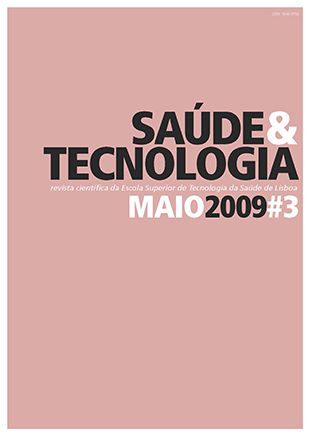Ocurrence of cadmium in cereal-based baby foods from conventional and organic farming
DOI:
https://doi.org/10.25758/set.194Keywords:
Cadmium, Organic farming, Conventional farming, Infant cerealsAbstract
Food ingestion is an obvious way of exposure to metals. Cereal foods are an important source of nutrition in the diet of infants and children and are among the first solid foods eaten. Infants have a more limited diet and consume a higher proportion of their body weight than adults. Cadmium is a toxic metal that occurs naturally in soil, spreading in human and other animal food chains. Due to the cadmium content of fertilisers used in conventional farming, there has been a crescent interest in organic products, thought of as less harmful to the environment and healthier. In the present study, ten samples of both conventional and organic production were analysed for cadmium content using graphite furnace atomic absorption spectroscopy, after dry ashing. All values were under the maximum admissible cadmium content for cereals. Mean cadmium levels were found to range from <1.2 to 9.0 and 9.0 to 69.0 μg/Kg fresh weight in conventional and organic samples, respectively. Cadmium content in organic samples is higher than in conventional ones. Further studies should be performed in order to analyse a larger number and variety of samples, and also to study other conditions that may influence the cadmium content in food.
Downloads
References
Tuzen M, Soylak M. Determination of trace metals in canned fish marketed in Turkey. Food Chem. 2007;101(4):1378-82.
Food Standards Agency. Survey of metals in weaning foods and formulae for infants [Internet]. Food Standards Agency; 2006 Sep [cited 2007 Sep 19]. Available from: www.food.gov.uk/multimedia/pdfs/fsis1706.pdf
Eklund G, Lindén A, Tallkvist J, Oskarsson A. Bioavailability of cadmium from in vitro digested infant food studied in caco-2 cells. J Agric Food Chem. 2003 Jul;51(14):4168-74.
Larsen EH, Andersen NL, Möller A, Petersen A, Mortensen GK, Petersen J. Monitoring the content and intake of trace elements from food in Denmark. Food Addit Contam. 2002 Jan;19(1):33-46.
Eklund G, Oskarsson A. Exposure of cadmium from infant formulas and weaning foods. Food Addit Contam. 1999 Dec;16(12):509-19.
Agency for Toxic Substances and Disease Registry. Toxicological profile for cadmium [Internet]. Atlanta-GA: Department of Health and Human Services; 1999 Jul [cited 2007 Sep 19]. Available from: www.atsdr.cdc.gov/toxprofiles/tp5.html
European Environment and Health Information System. Exposure of children to chemical hazards in food [Internet]. Bonn: ENHIS; 2007 May [cited 2007 Sep 19]. Available from: www.euro.who.int/Document/EHI/ENHIS_Factsheet_4_4.pdf
Williams CM. Nutritional quality of organic food: shades or grey or shades of green? Proc Nutr Soc. 2002 Feb;61(1):19-24.
Saba A, Messina F. Attitudes towards organic foods and risk/benefit perception associated with pesticides. Food Qual Prefer. 2003 Dec;14(8):637-45.
Alvito P, Oliveira L, Alcobia D, Capucho S, Fonseca C, Vasconcelos L, et al. A comparative study on organic and conventional farming in Portugal: results on contaminant levels in vegetables. Rev Alim Hum. 2004;10(1):27-32.
Barreira MJ, Figueiredo C, Martins C, Alvito P. Patulin in apple-based baby foods in Portugal. In: XII International IUPAC Symposium on Mycotoxins and Phycotoxins, Istanbul-Turkey, 2007 May 21-25.
Piemontese L, Solfrizzo M, Visconti A. Occurrence of patulin in conventional and organic fruit products in Italy and subsequent exposure assessment. Food Addit Contam. 2005 May;22(5):437-42.
Malmauret L, Parent-Massin D, Hardy JL, Verger P. Contaminants in organic and conventional foodstuffs in France. Food Addit Contam. 2002 Jun;19(6):524-32.
Baert K, De Meulenaer B, Kamala A, Kasase C, Devlieghere F. Occurrence of patulin in organic, conventional and handcrafted apple juices marketed in Belgium. J Food Prot. 2006 Jun;69(6):1371-8.
Jorhem L, Slanina P. Does organic farming reduce the content of Cd and certain other trace metals in plant foods? A pilot study. J Sci Food Agric. 2000 Jan;80(1):43-8.
Grinder-Pedersen L, Rasmussen SE, Bügel S, Jörgensen LV, Dragsted LO, Gundersen V, et al. Effect of diets based on foods from conventional versus organic production on intake and excretion of flavonoids and markers of antioxidative defense in humans. J Agric Food Chem. 2003 Sep;51(19):5671-6.
International Standard ISO 8466-1:1990. Water quality – Calibration and evaluation of analytical methods and estimation of performance characteristics. Part 1: statistical evaluation of the linear calibration function.
RELACRE. Validação de métodos internos de ensaio em análise química. Monte da Caparica: Instituto Português da Qualidade; 2000.
Regulamento da Comissão (CE) n.º 333/2007, da Comissão, de 28 de Março de 2007, que estabelece métodos de amostragem e de análise para o controlo oficial dos teores de chumbo, cádmio, mercúrio, estanho na forma inorgânica, 3-MCPD e benzo(a)pireno nos géneros alimentícios. Jornal Oficial da União Europeia. Série L (88):29-38.
Decisão da Comissão n.º 2002/657/EC, de 12 de Agosto de 2002, que dá execução ao disposto na Directiva 96/23/CE, do Conselho, sobre o desempenho de métodos analíticos e interpretação de resultados. Jornal Oficial da União Europeia. Série L (221):8-36.
Downloads
Published
Issue
Section
License
Copyright (c) 2023 Saúde e Tecnologia

This work is licensed under a Creative Commons Attribution-NonCommercial-NoDerivatives 4.0 International License.
The journal Saúde & Tecnologia offers immediate free access to its content, following the principle that making scientific knowledge available to the public free of charge provides greater worldwide democratization of knowledge.
The journal Saúde & Tecnologia does not charge authors any submission or article processing charges (APC).
All content is licensed under a Creative Commons CC-BY-NC-ND license. Authors have the right to: reproduce their work in physical or digital form for personal, professional, or teaching use, but not for commercial use (including the sale of the right to access the article); deposit on their website, that of their institution or in a repository an exact copy in electronic format of the article published by Saúde & Tecnologia, provided that reference is made to its publication in Saúde & Tecnologia and its content (including symbols identifying the journal) is not altered; publish in a book of which they are authors or editors the total or partial content of the manuscript, provided that reference is made to its publication in Saúde & Tecnologia.







